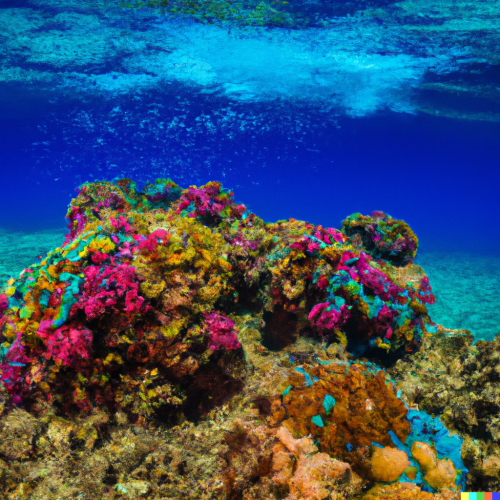The world’s coastal communities are facing a major threat in the form of rising sea levels. Climate change is causing sea levels to rise at an unprecedented rate, with devastating consequences for the people and ecosystems that depend on coastal areas. According to the Climate.gov, sea levels have risen by around 21-24cm since the 1880s, and according to NASA, sea levels along the US coastline could rise by up to 30cm.
This may not sound like much, but even a small rise in sea levels can have a significant impact on coastal communities. As sea levels rise, the likelihood of coastal flooding increases, putting homes, businesses, and infrastructure at risk. In low-lying areas, even a small rise in sea levels can lead to frequent and damaging floods. This not only causes damage to property, but can also lead to the loss of livelihoods, as businesses and farms are destroyed.

More than 40% of the global population live within 100 kilometres of a coastline, and The World Bank estimates that by 2050, more than 140 million people may be forced to migrate due to rising sea levels, with low-lying areas in Asia and the Pacific, as well as the Caribbean, being particularly vulnerable. The impact of rising sea levels on Southeast Asia is already being felt.
In the Philippines, for example, the city of Manila is already experiencing regular flooding due to sea level rise, and in Thailand, the popular tourist destination of Phuket has also been affected by rising sea levels, with some beaches disappearing altogether. Many Southeast Asian countries rely heavily on tourism, which could be severely impacted by the loss of beaches and other coastal attractions. The fishing industry, which employs millions of people across the region, could also suffer due to the loss of habitat and changing ocean conditions.
According to a report by the United Nations Development Programme (UNDP), if current trends continue, sea levels in Southeast Asia could rise by as much as 1.5 meters by the end of the century. This would lead to devastating consequences for the region, including the loss of land, increased flooding, and more frequent and severe storms.
The impacts of sea level rise are already being felt in the Caribbean. Coastal erosion is becoming more severe, and storm surges are causing more damage to infrastructure and communities. The Caribbean is made up of over 7,000 islands, and many of them are low-lying, making them particularly vulnerable to rising sea levels.
The tourism industry, which is a major source of revenue for many Caribbean countries, is also under threat. As beaches erode and coral reefs are damaged, the natural beauty that attracts tourists is disappearing. In addition, many of the hotels and resorts that line the coastlines are at risk of flooding and damage from storms.

The impact of climate change on coral reefs is particularly concerning. Coral reefs are incredibly sensitive to changes in temperature, water chemistry, and other environmental factors. As the planet warms, coral reefs are increasingly under stress from rising ocean temperatures, ocean acidification, and other environmental stressors. This stress is causing widespread damage to coral reefs, which are already facing threats from pollution, overfishing, and habitat destruction. As coral reefs are damaged or destroyed, the entire ecosystem of aquatic life that depends on them is also impacted.
Fortunately, there are actions being taken to address the problem. Governments, scientists, and conservation organizations are working together to protect and restore coral reefs, through measures such as reducing greenhouse gas emissions, protecting marine habitats, and promoting sustainable fishing practices.
There are also opportunities for innovation and new technologies to help address the problem. For example, scientists are exploring new ways to breed and transplant coral, while entrepreneurs are developing new technologies to reduce carbon emissions and protect marine habitats.

The UK’s southern coast is particularly vulnerable to rising sea levels due to its low-lying topography, high population density, and a long history of human settlement and development. The UK has already experienced several major flood events in recent years, causing significant damage to homes, businesses, and infrastructure. As sea levels continue to rise, these flood events are expected to become more frequent and severe, with the potential to displace large numbers of people and cause significant economic disruption.
The southern coast of the UK is home to several major ports and transportation hubs, which are particularly vulnerable to flooding and sea level rise. Additionally, rising sea levels can lead to saltwater intrusion into freshwater aquifers, which can compromise the reliability of local water supply systems. Salt marshes, mudflats, and sand dunes are ecosystems which are particularly vulnerable to rising sea levels, as they rely on a delicate balance of freshwater and saltwater inputs.

One of the most effective ways to reduce the impacts of rising sea levels is by preventing flooding. This can be achieved through a variety of measures, such as building levees, creating storm water retention ponds, and improving drainage systems. Flood prevention measures should be designed to work in harmony with other coastal management strategies, such as beach nourishment and dune restoration. Creating dunes, planting mangroves, and building sea walls helps to protect coastal communities from flooding and erosion.
Sustainable land use planning involves limiting development in high-risk areas, protecting natural habitats, and promoting sustainable development practices. This approach can help to reduce the impacts of rising sea levels by minimizing the number of people and properties exposed to coastal hazards. Raising roads and buildings above the projected sea level, constructing sea walls around critical infrastructure, and relocating essential services to higher ground.
Rising sea levels pose a significant threat to coastal communities worldwide. However, by implementing the strategies outlined in this report, we can reduce the impacts of rising sea levels and promote a more sustainable and resilient coastal environment. Effective coastal management, flood prevention, infrastructure adaptation, sustainable land use planning, and public awareness and education are all critical components of a comprehensive approach to reducing the impacts of rising sea levels.
This article was produced with the help of Artificial Intelligence, in particular Chat GPT, Nightcafe, and DALL.E-2. Multiple prompts were used as an input in AI to gather data, which was then cross-referenced with other sources and edited by journalists reporting for the breaker.








